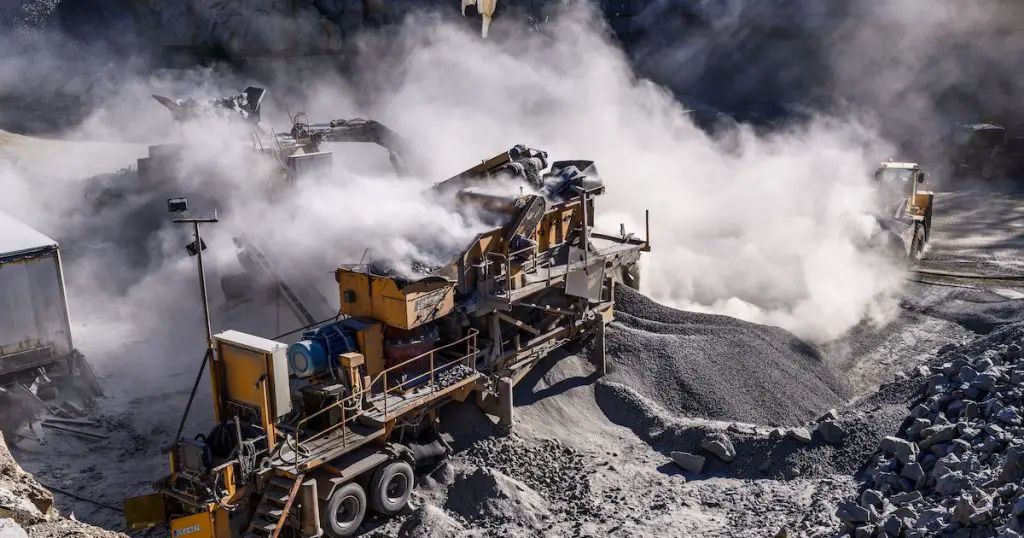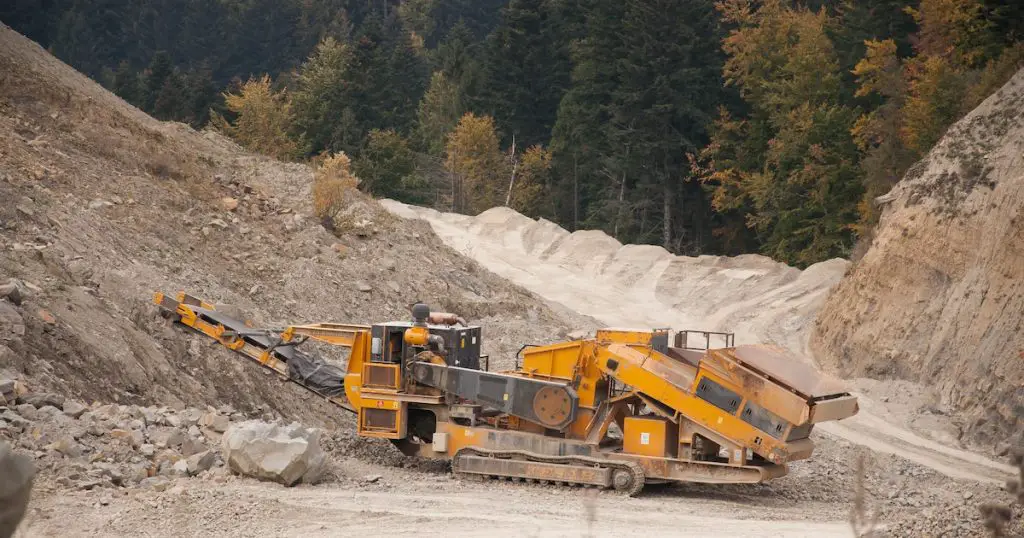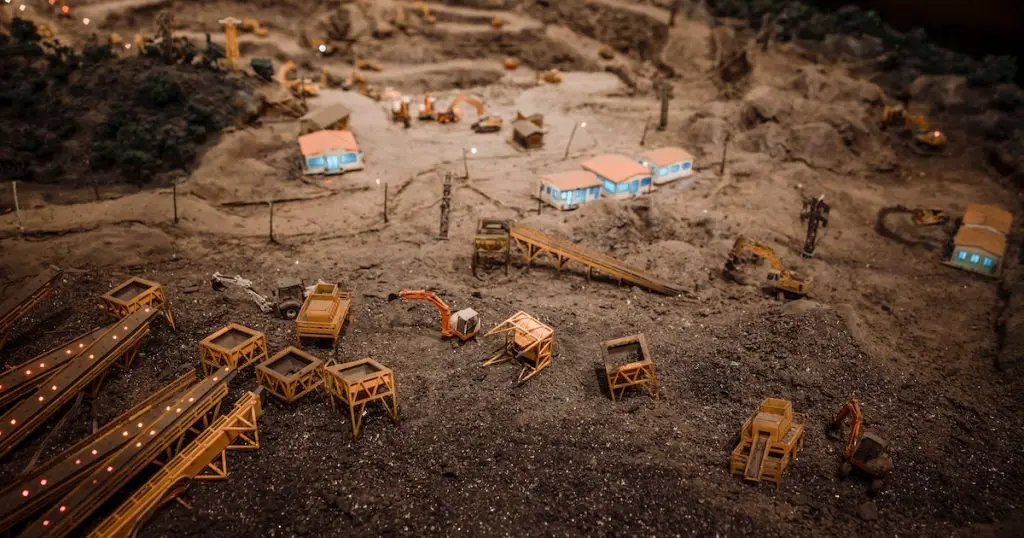Prescott, once a flourishing hub of mining, is now shifting its narrative. The golden era of extraction left its marks on the landscape, with numerous abandoned mines scattering the terrain. The challenge and opportunity presented to Prescott today lie in the conversion of former mining sites to recreational areas.
This transformation is not just about reclaiming the land but also about weaving new memories, experiences, and economic possibilities into the very fabric of Prescott’s history.

Environmental Challenges and Remediation
The legacy of mining activities often bequeaths a slew of environmental concerns, ranging from soil contamination to disturbed habitats. In Prescott, the challenge is two-fold: addressing these environmental issues while crafting a space that’s both safe and enjoyable for the public.
Remediation becomes crucial, involving processes like soil detoxification, water purification, and habitat restoration. This endeavor is not just about beautification, but about healing the land.
Through a mix of modern science and traditional knowledge, Prescott’s projects aim to strike a balance, ensuring that the transformed recreational areas aren’t just aesthetically pleasing but are also ecological triumphs in their own right.
Overview of the environmental concerns
Soil contamination, one of the prominent concerns, results from the residue left behind by mining processes. These contaminants pose potential health risks to both humans and wildlife. Link to EPA guidelines on soil contamination.
Water pollution, another significant worry, stems from the chemicals used in extraction, potentially seeping into water bodies, and affecting aquatic life and groundwater.
Lastly, ecosystem disruption leads to habitat loss and reduced biodiversity. These concerns underline the need for comprehensive environmental strategies before these sites can morph into recreational havens.
Remediation strategies employed
Restoring the natural balance of the land begins with soil treatment and stabilization. By introducing organic matter and using advanced techniques like phytoremediation, where plants help extract pollutants, the soil can be rejuvenated. A case in point is the success of the Superfund program, which emphasizes on remediating contaminated sites.
Water quality restoration involves eliminating pollutants and ensuring the water’s pH level is balanced. This can be achieved through natural filters like wetlands or engineered solutions.
Additionally, efforts are in place to rejuvenate the biodiversity. By planting native species and creating habitats, the local fauna can gradually return, breathing life back into these sites.
Economic Considerations
The financial implications of repurposing former mining sites in Prescott are manifold. On one hand, there’s the immediate cost of remediation, planning, design, and construction. However, these initial expenditures are offset by the long-term economic boons these recreational areas can usher. They attract tourists, spurring local businesses and creating job opportunities.

Moreover, the enhanced real estate value around these refurbished zones boosts the town’s economy. But beyond tangible metrics, these projects are investments in Prescott’s future — fostering sustainable tourism, enhancing local quality of life, and laying down the foundation for a robust economic ecosystem that marries history with progress.
The decline of mining and its economic implications
The winding down of mining activities led to job losses and a dip in economic contributions.
Mining towns faced challenges in diversifying their economies and finding sustainable growth avenues. Link to a study on the economic implications of declining mining.
Evaluating the potential returns from recreational conversions
Tourist influx in recreational areas can boost local businesses, from cafes to souvenir shops. Additionally:
- Increased tourist footfall leads to more accommodations and services.
- Diverse recreational activities can lead to job opportunities, from guides to maintenance staff.
While the returns can be promising, the initial investments are substantial. Remediation expenses encompass hiring experts, machinery, and time. Infrastructure, like pathways, amenities, and safety measures, further adds to the cost.
Social Impacts and Community Involvement
The metamorphosis of former mining sites into recreational zones has cascading social impacts on the Prescott community. These rejuvenated spaces serve as communal hubs, fostering connections and nurturing local traditions.
But beyond providing areas for leisure, they rekindle a sense of pride, bridging past mining glories with future potentials. At the heart of these transformations lies robust community involvement. Residents, with their deep-rooted ties to the land, play pivotal roles in shaping these projects.
Their insights, feedback, and hands-on participation ensure that each recreational site isn’t just a space, but a reflection of the community’s spirit, hopes, and aspirations.
The role of local communities in the transition
Stakeholder meetings are pivotal in garnering support and understanding the aspirations of the local populace. These platforms foster dialogue and consensus-building. Link to community engagement methods.
Parallelly, community-based initiatives allow locals to be directly involved. Be it tree-planting drives or mural paintings; these initiatives instill a sense of ownership.
Social benefits of recreational areas
Beyond economic benefits, recreational areas enhance health and well-being. The open spaces encourage physical activities, and the serene surroundings provide a mental respite.
Moreover, these sites can be educational goldmines. With information boards, guided tours, and interactive sessions, visitors can delve into Prescott’s mining history and the journey of transformation.
Planning and Design Aspects
Transforming mining sites into recreational treasures requires a meticulous blend of planning and design innovation. Every site, with its unique topographical and historical nuances, demands a tailored approach. Central to this transformation is the integration of Prescott’s rich cultural tapestry into the design, ensuring each recreational space tells a story.
Incorporating sustainable practices, respecting the land’s innate features, and weaving in modern amenities, the planning and design phase becomes the blueprint of a dream. It’s where the memories of yesteryears meet the aspirations of today, crafting spaces that resonate with both heart and history.
Assessing the unique features of each site
Every site has its own set of challenges and opportunities. Topographical considerations dictate the kind of recreational activities that can be hosted. For instance, deep quarries might be turned into serene lakes. Link to topographical mapping.
Furthermore, the historical significance of a site can guide its design. Elements reminiscent of its mining past can be integrated.
Integrating local culture into design
Incorporating Prescott’s rich culture and history adds depth. Themed parks or facilities celebrating local legends, folklore, or even mining techniques can make the recreational areas truly unique.
Public art installations, especially those created by local artists, add a touch of vibrancy and foster a sense of community pride.
Green infrastructure ensures the minimal environmental footprint of the recreational facilities. Techniques such as rainwater harvesting, solar-powered amenities, and use of sustainable materials are increasingly being adopted.
Successful Case Studies
Prescott’s mission to rejuvenate old mining sites into recreational paradises has borne fruit in several success stories. One standout example is Watson Lake Park, which metamorphosed from a mere gravel quarry to a breathtaking recreational haven, complete with azure waters set against the iconic backdrop of the Granite Dells.

Each success story, from small patches of green to sprawling parks, offers a narrative of challenges faced, solutions crafted, and visions realized. These case studies serve not just as testimonials to Prescott’s commitment but also as guiding lights for similar endeavors globally.
Watson Lake Park
Once a gravel quarry, Watson Lake Park stands as a testament to vision and perseverance. Its azure waters against the backdrop of Granite Dells make it a scenic marvel. Activities range from kayaking to hiking, drawing locals and tourists alike.
Each transformed site has its own narrative, with specific challenges and achievements. The lessons gleaned from each project pave the way for future endeavors.
Potential Challenges and Criticisms
The transformation of former mining sites into recreational spaces, though commendable, doesn’t come without its set of challenges and criticisms. Environmental purists may question the degree to which these sites should be modified, while economic skeptics could raise eyebrows at the return on investment.
There’s also the delicate act of balancing historical preservation with the demands of modern recreation. As these endeavors aim to breathe new life into old grounds, navigating these concerns becomes pivotal to ensure that the transformations are both respectful of the past and visionary in their approach to the future.
Environmental purists vs. recreational development
There’s a delicate balance between preserving nature in its raw form and developing it for recreation. Some environmental purists argue that certain areas should be left untouched.
The ROI (Return on Investment) of such transformations can be a topic of debate. Critics argue that the funds might be better utilized elsewhere.
How much of the mining legacy should be preserved, and how much should give way to modern amenities? This is a recurrent theme in many transformation discussions.
The Future of Recreational Mining Sites
As Prescott continues its transformative journey, the future of its recreational mining sites brims with potential. Leveraging lessons from past projects and integrating cutting-edge sustainable practices, these sites are poised to become more than just recreational hubs.
They’ll stand as symbols of harmony between nature and human ingenuity, seamlessly blending history with modernity. With a continued focus on community involvement and environmental stewardship, the horizon promises an era where mining legacies are celebrated, not as relics of the past, but as vibrant cornerstones of a sustainable and inclusive future.
Ongoing projects and proposals
Several mining sites await their moment of transformation. These future projects are equipped with the learnings from past endeavors.
Every project imparts invaluable insights. Whether it’s about community engagement, design elements, or sustainability, the learnings shape future projects.

The recreational sites don’t stand in isolation. They are a part of Prescott’s broader vision of tourism and regional development.
Frequently Asked Questions: Conversion of Former Mining Sites to Recreational Areas in Prescott
In this section, we will be delving into some of the most common inquiries and curiosities that surround our topic.
Why is remediation important before recreational development?
Remediation ensures that the land is free from harmful contaminants that might pose health risks to visitors and the local ecosystem. A site’s past as a mining ground can often mean residues of harmful chemicals and metals. Proper remediation guarantees that the transformation is not just cosmetic, but deep and meaningful, ensuring safety and sustainability.
How are local communities involved in the decision-making process?
Local communities are often involved through stakeholder meetings, feedback sessions, and community-based initiatives. Their insights, concerns, and aspirations are valuable in shaping the vision and execution of the project. After all, they share a deep connection with the land and its history.
What are the primary sources of funding for these projects?
Funding sources can be diverse, including government grants, private investments, public-private partnerships, and community crowd-funding. Often, the nature and scale of the project dictate the funding approach. Link to funding models for community projects.
How long does it typically take to convert a mining site to a recreational area?
The duration varies based on the site’s size, the extent of environmental damage, the vision for the recreational space, and funding availability. Typically, smaller projects might span a few months, while larger, more complex sites can take years.
Can any mining site be transformed into a recreational spot?
While many mining sites hold potential for transformation, each site requires a thorough assessment. Factors like environmental damage, historical significance, location, and community aspirations play a role in determining its feasibility for conversion.
Summary
Prescott’s endeavor to transform mining remnants into vibrant recreational hubs is a testimony to resilience, vision, and community spirit. These spaces, once echoing with the sounds of extraction, now resonate with laughter, adventure, and memories in the making.
The journey from mines to memories encapsulates the town’s commitment to a sustainable future while honoring its rich past. Through challenges and triumphs, Prescott emerges as a beacon for other regions, showcasing how history and progress can beautifully coexist.
With every transformed site, Prescott stitches together tales of its golden mining era with vibrant threads of contemporary recreation, weaving a tapestry rich in heritage and promise.



Leave a Comment
You must be logged in to post a comment.